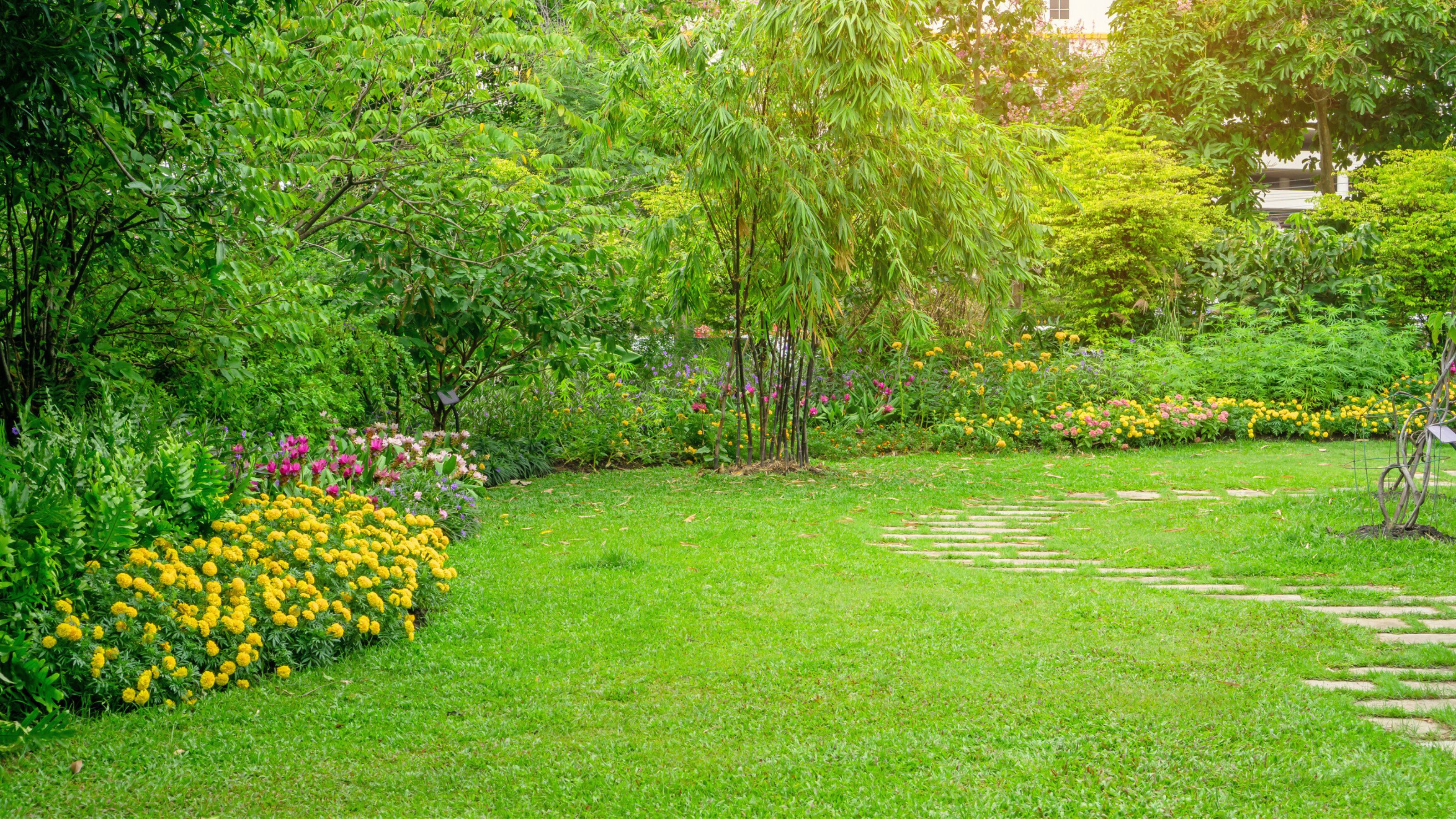

Ever wondered how to aerate a lawn and achieve that professional finish? Well, you’re in the right place.
Lawns require more than a regular water, trim and weed. In fact, the art of maintaining a healthy lawn relies on the balance of a host of techniques, including how often and how well its aerated.
If you’re new to lawn care, or a seasoned pro looking for some additional tips, our experts are on-hand to help. But, first of all, let’s dive into why it’s important not to skip this step when working on your yard this summer.
What is aerating a lawn?
Lawn aeration is the process of poking small holes into the soil to improve the circulation of air flow into this area of your yard. It helps to alleviate any soil compaction, which can impact the health of your grass, and allow water, air and other nutrients to penetrate the soil.
Aerating your lawn can improve the health and longevity of your grass, so it remains vigorous and rich every single year. Alongside, letting out any build up of carbon dioxide, aeration helps combat any thatch. That's the dried, brown grass that collects when you mow your lawn.
Bryan Clayton CEO, GreenPal explains: "Your lawn gets a lot of foot traffic—kids playing, backyard BBQs, you name it. Over time, this traffic compacts the soil, making it as hard as a rock. When your soil is compacted, it’s tough for anything to get through; water, nutrients, and air can’t penetrate effectively.”
“Aeration comes in to break up this compacted soil, literally giving your grass a breath of fresh air. It punctures the ground, creating holes that allow all the good stuff to reach the grass roots.”
If you don’t aerate your lawn, then the roots can't get the water or nutrients they need, which can prohibit further growth of your lawn, as the soil becomes dense and compressed.
To keep it healthy, aerate your lawn twice a year, using a handy tool such as the manual Vanpein core aerator from Amazon.
How to aerate your lawn
Our experts share the step-by step process to aerate your lawn well.
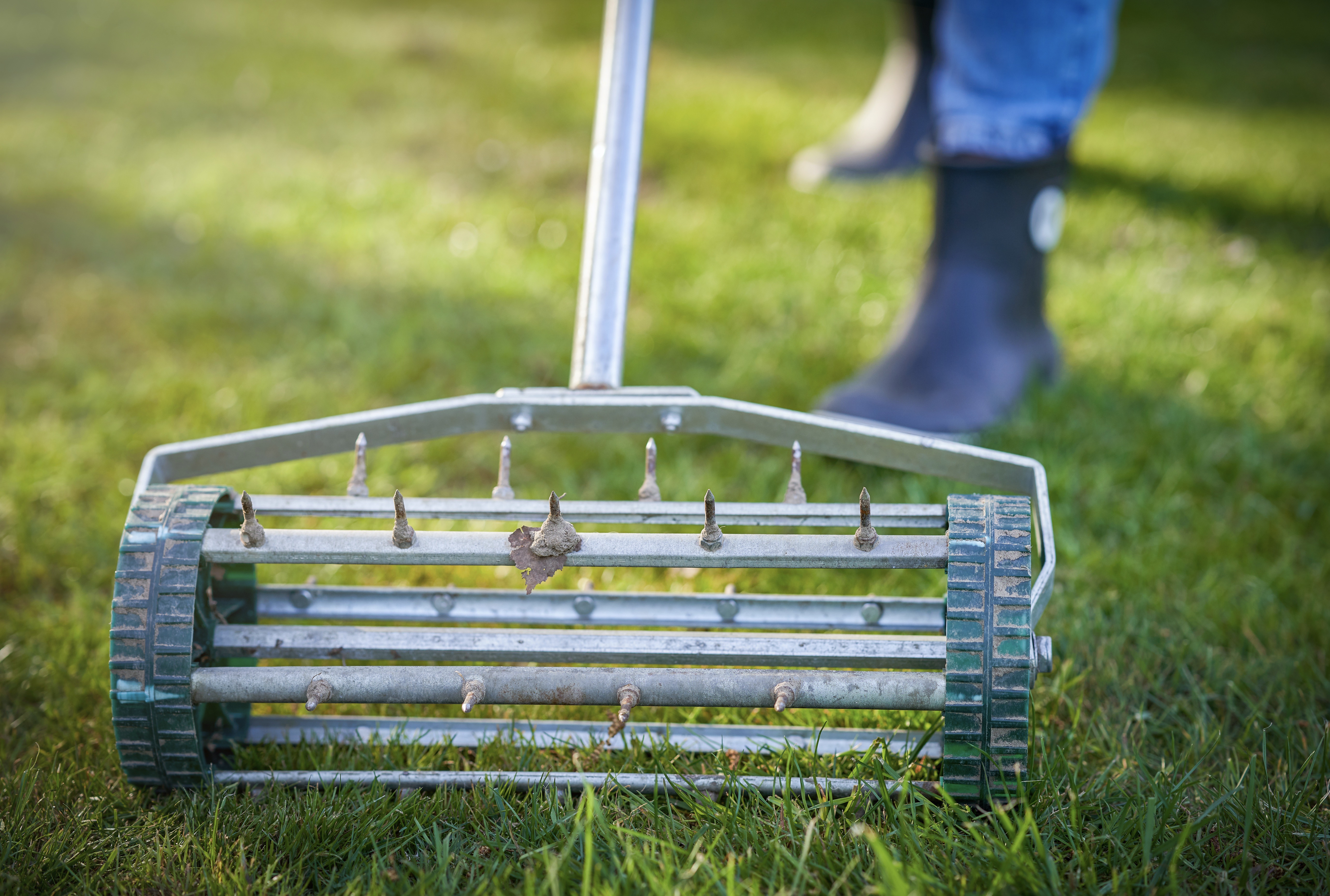
Step 1: Wait for the right weather
It’s important to aerate your lawns during the spring or autumn months, as the grass needs to be moist in order to aerate it well, but whilst avoiding heavy saturation.
If there’s been high rainfall the day before, wait a few days to aerate your lawn when the moisture has dried up a bit. If you were to let that rainwater fully penetrate into the soil by aerating, this could over-saturate your lawn and leave it water logged.
Similarly, if your grass has dried out during hot and humid periods, wait to aerate until the weather changes and there is some rainfall. After all, it’s easier to penetrate soft soil than parched summer soil.
Step 2: Decide on method of aeration
There are three different types of aeration: plug aerators, spike aerators and liquid aerators.
Core or plug aerators, such as the bestselling Agri-Fab 48-inch Plug Lawn Aerator from Lowe's, are widely regarded as the most efficient method, as it extracts a plug of soil to allow a deeper access to the lawn.
Whereas, spike aerators (such as the Meoligr aerating tool with wide foot plate from Amazon) simply poke holes into the ground, without removing any of the existing soil. Sometimes this can compress the soil further, so core or plug aerators are considered the better option.
Liquid aeration is mainly on lawns where physical aerators would be less effective, as the weather conditions or soil make it difficult to penetrate into the grass root layer.
The size of your lawn can impact the method of aeration you might want to use. For small spaces, a manual tool to aerate the lawn such as the spike or plug aerator.
If you have a larger lawn, it might be worth investing in an electric aerator, as long as you have the space to store it.
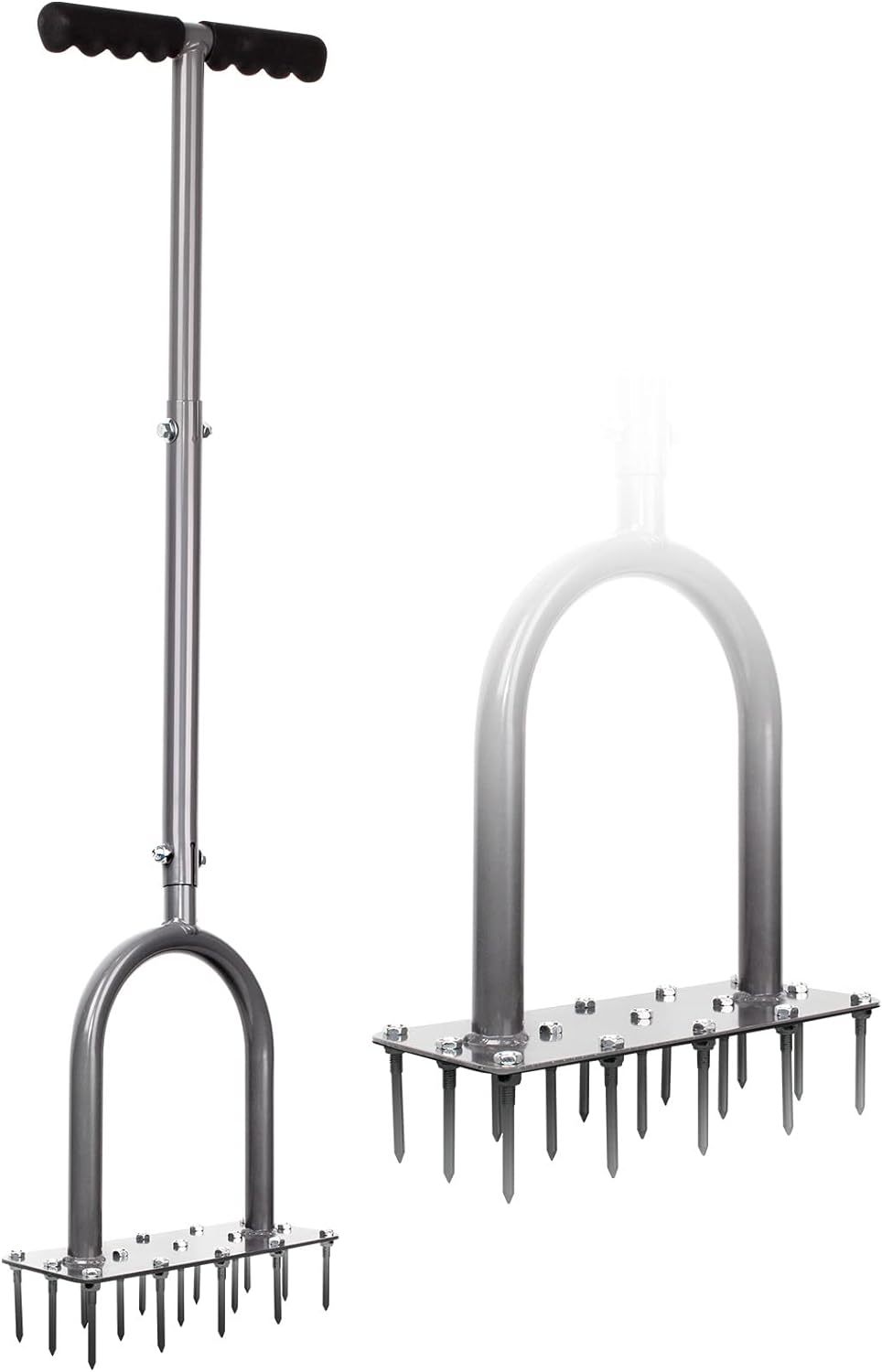
Price: Was $31.95, now $25.56
With 15 sharp spikes, the Walensee manual lawn aerator creates a healthy, thicker lawn efficiently. Made from heavy-duty and rust-resistant materials, this spike aerator lets you tend to your lawn without any strain as it's light to carry and easy to move around, and will last well despite its repeated exposure to moisture. Store in a garage or shed when not in use to help it's longevity.
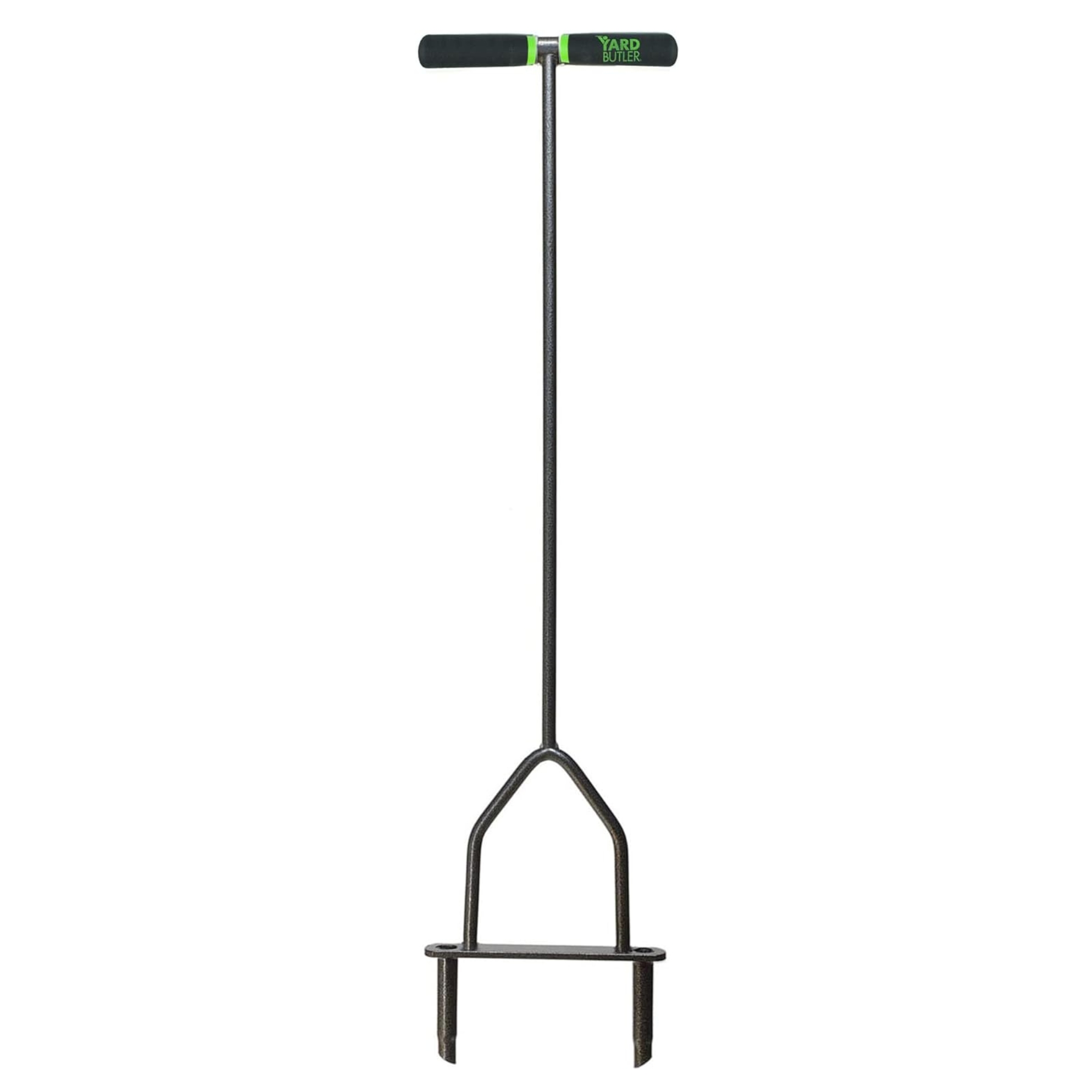
Price: $48.95
The Yard Butler aerator removes 3-inch cores from the soil to reduce compaction and increase circulation, water and nutrients flowing into the grass roots. Built from durable steel, this high-performance tool is designed to last a life time. There’s also a foot bar for extra leverage to make it more efficient and easy to use. It's also quite tall at 37 inches helping prevent knee and back strain.
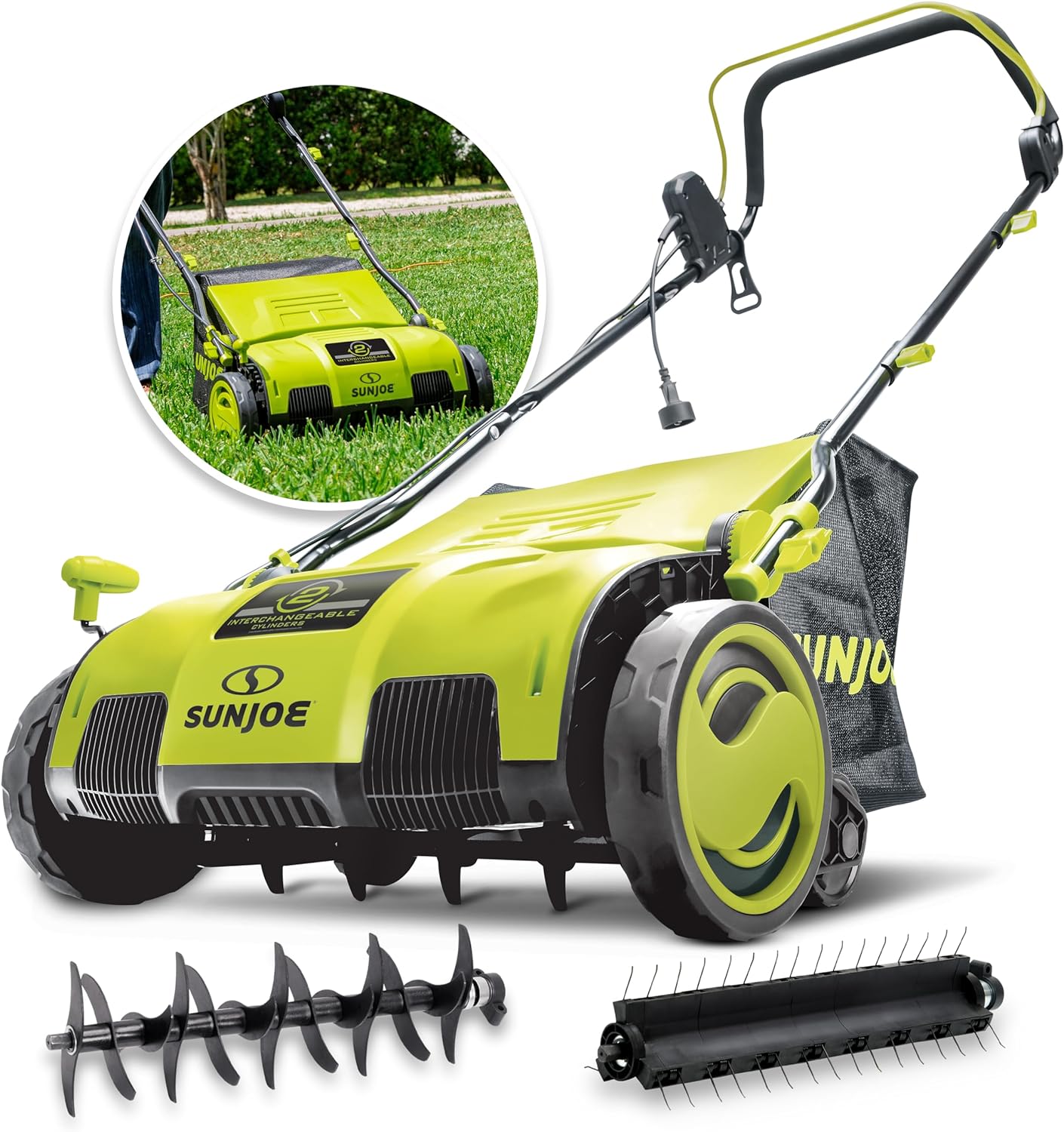
Price: $199
This multi-purpose tool is ideal for tending to your lawn. Made for aerating with speed and ease, this 15-inch wide machine is designed to tackle large lawns. It works when scarifiying and an aerator to help your grass roots grow thicker and healthier than ever before.
Step 3: Aerate the soil
Using your chosen tool, make your way across your lawn and create small holes in the grass. These holes need to be around five inches deep with a six-inch gap between sections to ensure there is enough space for the air to circulate and water to seep into the roots.
"Aerating your lawn can feel like a miracle cure," Bryan says. "This rejuvenation makes your grass thicker and healthier. Also, those holes left by the aerator? They’re perfect for overseeding. Throw some seed down after aerating, and you're essentially hitting the refresh button on your lawn."
Step 4: Water your lawn
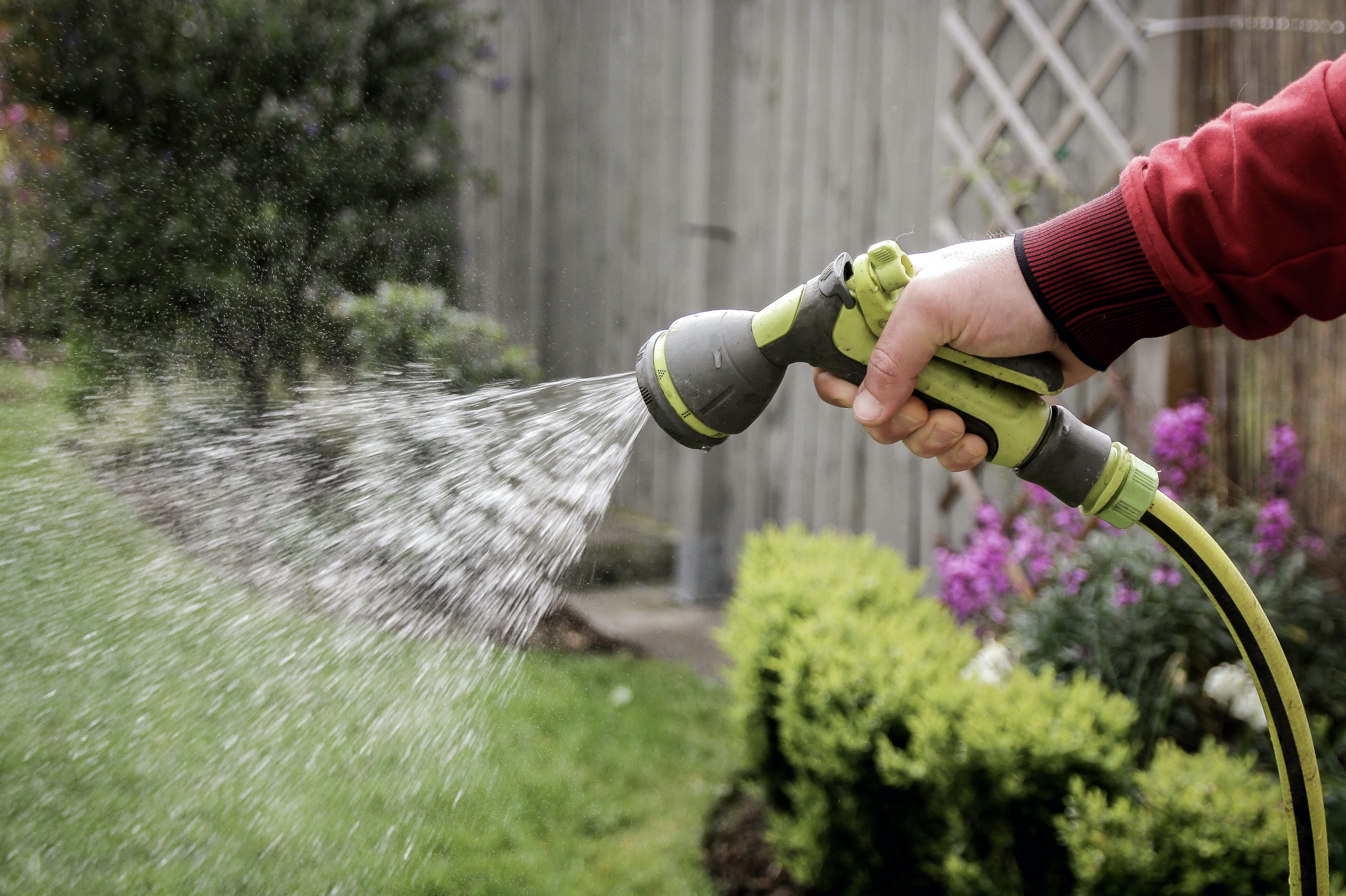
When you’ve finished aerating your lawn, it’s time to give it a generous drink. Allow the soil to soak up some of this moisture to start the revitalizing process of nurturing and growing your grass.
Steo 5: Repeat
For the best results, repeat this entire process at another point in the year. Pick a date in the spring and one in the autumn and mark it on your calendar, so that weather permitting, your lawn is booked for an aeration twice a year.
"Aerating at least once a year, particularly during the fall, preps your lawn to be lush and green come spring," Bryan adds.
"More times don't hurt, but hitting that once-a-year mark is crucial for maintaining a healthy yard."
You can learn about other yard jobs on our dedicated gardening calendar.
Now you have aerating your lawn under firm control, learn about the mowing mistakes to avoid, and how to seed a patchy lawn.
Join our newsletter
Get small space home decor ideas, celeb inspiration, DIY tips and more, straight to your inbox!

Jess is a freelance culture, life and entertainment journalist based in Cambridgeshire who has bylines in Rolling Stone, GQ, Dazed, Cosmopolitan, Stylist, Radio Times, The Guardian and the i. In between overanalysing her favourite TV shows, she’s working on her debut non-fiction book.